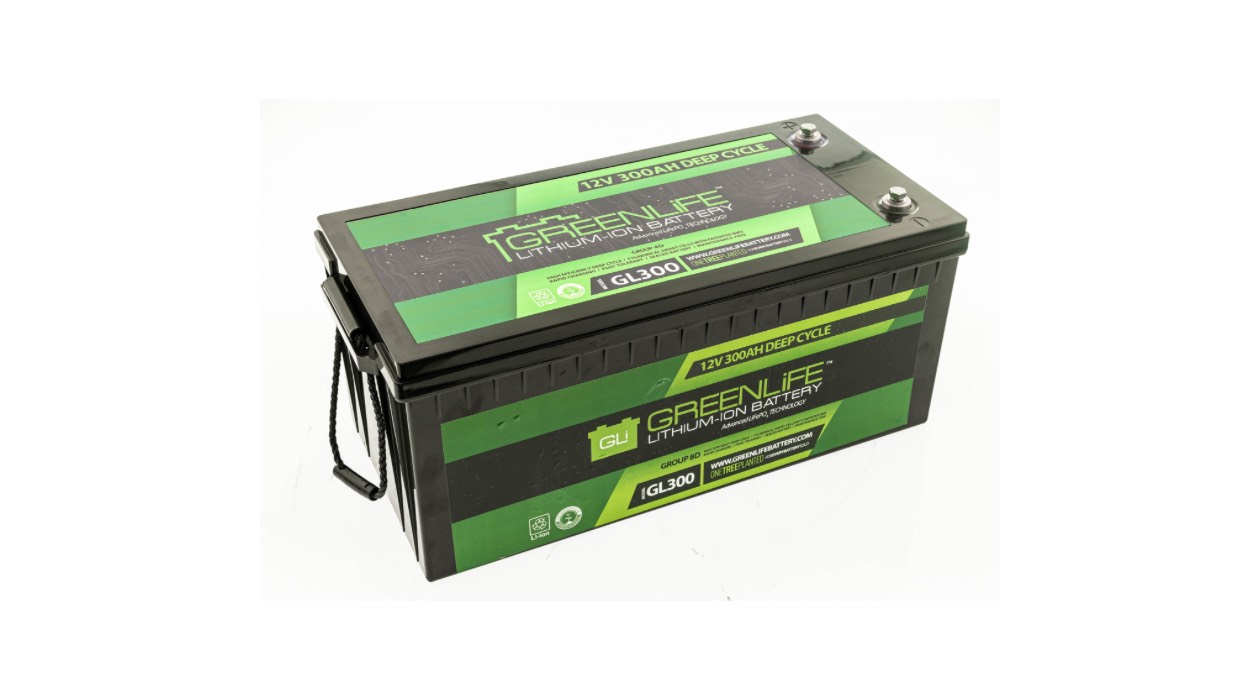

Articles
How To Store Lithium Batteries For The Winter
Modified: February 24, 2024
Learn how to properly store lithium batteries during the winter season with our helpful articles. Prepare your batteries for the colder months and prevent damage.
(Many of the links in this article redirect to a specific reviewed product. Your purchase of these products through affiliate links helps to generate commission for Storables.com, at no extra cost. Learn more)
Introduction
Welcome to our comprehensive guide on how to properly store lithium batteries for the winter. As the colder months approach, it’s important to ensure that your lithium batteries are stored correctly to maintain their performance and prolong their lifespan. Whether you’re storing batteries for personal devices like smartphones or tablets, or larger batteries for electric vehicles or power tools, following the right steps will help prevent potential damage and ensure their optimum functioning when you’re ready to use them again.
Lithium batteries have become increasingly popular in recent years due to their high energy density, longer lifespan, and lightweight design. They power a wide range of devices we rely on daily, from portable electronics to electric vehicles. However, extreme temperatures can significantly affect the performance and durability of lithium batteries. Cold weather, in particular, can cause the battery chemistry to slow down, reducing its capacity and overall efficiency. That’s why it’s essential to take proper precautions to protect your batteries during winter storage.
In this guide, we will explore the steps you need to take to prepare your lithium batteries for winter storage. We’ll discuss how to choose the right storage location, clean and disconnect the batteries, and implement proper charging and discharging techniques. We’ll also provide insights on protecting them from extreme temperatures, monitoring their condition throughout the winter, and performing necessary maintenance to ensure they’re in optimal condition when you retrieve them.
By following these guidelines, you can prevent potential damage to your lithium batteries and maximize their performance and longevity. So let’s dive in and learn how to store lithium batteries for the winter!
Key Takeaways:
- Properly storing lithium batteries for winter ensures optimal performance, longevity, and safety. Follow guidelines for cleaning, disconnecting, and choosing the right storage location to safeguard your batteries.
- Monitoring and maintenance during winter storage are crucial for preserving lithium batteries. Regular inspection, temperature monitoring, and maintenance charging help ensure optimal battery health and performance.
Read more: How To Store A Lithium Battery
Understanding Lithium Batteries
Before we delve into the details of storing lithium batteries for the winter, let’s take a moment to understand the basics of these remarkable power sources. Lithium batteries are rechargeable batteries that use lithium ions to store and release energy. They have gained popularity due to their high energy density, longer lifespan, and lightweight construction. Unlike traditional lead-acid batteries, lithium batteries do not require maintenance and can provide reliable and consistent power for a wide range of applications.
Lithium batteries operate through a chemical reaction that occurs when lithium ions move from the positive electrode (cathode) to the negative electrode (anode) during discharge. When the battery is being charged, the lithium ions move back to the positive electrode. This reversible process allows lithium batteries to be recharged multiple times, making them ideal for use in portable electronics, electric vehicles, and other energy-intensive devices.
One of the key advantages of lithium batteries is their high energy density, meaning they can store a significant amount of energy in a relatively small and lightweight package. This makes them ideal for portable devices where size and weight considerations are important. Additionally, lithium batteries have a low self-discharge rate, meaning they can hold their charge for an extended period when not in use.
It’s important to note that lithium batteries come in various chemistries, including lithium-ion (Li-ion), lithium polymer (LiPo), and lithium iron phosphate (LiFePO4). Each chemistry has its unique characteristics, advantages, and limitations. Different devices and applications require specific battery chemistries to ensure optimum performance and safety. Therefore, it’s crucial to check the manufacturer’s recommendations and guidelines when storing and using lithium batteries.
Now that we have a basic understanding of lithium batteries and their advantages, let’s explore why proper storage is so important during the winter months.
Why Proper Storage is Important
Properly storing lithium batteries during the winter is essential to maintain their performance, maximize their lifespan, and ensure their safety. Extreme cold temperatures can have adverse effects on the battery chemistry and overall functionality. Here are the key reasons why proper storage is crucial:
1. Preserve Battery Capacity: Cold temperatures can cause the chemical reactions within the lithium battery to slow down. This can result in a decrease in battery capacity, meaning the battery won’t hold as much charge as it should. Storing the batteries in a controlled environment helps prevent this capacity loss, ensuring that they can deliver the expected power when you need them.
2. Prolong Battery Lifespan: Cold temperatures can also accelerate the natural degradation process of lithium batteries, shortening their overall lifespan. By storing the batteries in a suitable environment, you can slow down this degradation, allowing the batteries to last longer and perform optimally over time.
3. Avoid Safety Issues: Lithium batteries contain flammable electrolytes and active materials, which can become more volatile under extreme temperatures. Extremely cold weather can cause the battery to become unstable and increase the risk of leakage, explosion, or other safety hazards. Proper storage helps mitigate these risks and ensures the safe handling and usage of lithium batteries.
4. Prevent Internal Damage: Lithium batteries are sensitive to temperature extremes, and exposing them to very cold conditions can lead to internal damage. This can result in irreversible changes to the battery’s chemistry, reducing its efficiency and lifespan. By storing the batteries in a controlled environment, you can prevent potential damage and maintain their integrity.
5. Save Money: By properly storing lithium batteries during the winter, you can avoid premature battery failure, which can be costly to replace. Maintaining the performance and lifespan of your batteries means you won’t have to spend money on frequent replacements, saving you in the long run.
To ensure the maximum benefits of proper battery storage, it’s important to follow the necessary steps and precautions. In the next section, we’ll outline the essential steps you need to take to prepare your lithium batteries for winter storage.
Steps to Prepare Lithium Batteries for Winter Storage
Preparing your lithium batteries for winter storage involves a series of important steps to ensure their optimal performance and longevity. Follow these guidelines to properly prepare your batteries:
1. Check the Battery Conditions: Before storing your lithium batteries, carefully inspect them for any signs of damage, leakage, or swelling. If you notice any issues, do not store the batteries and dispose of them properly following the manufacturer’s guidelines.
2. Fully Charge the Batteries: Charge the batteries to their maximum capacity before storing them. This helps prevent self-discharge and ensures the batteries are ready for use when you retrieve them. Use the appropriate charger recommended by the battery manufacturer.
3. Discharge to a Safe Level (Optional): If you plan on storing the batteries for an extended period, consider discharging them to around 40-60% of their capacity. This helps prevent over-discharge and maintains the health of the battery during long periods of inactivity. However, this step is optional and depends on the specific battery chemistry and manufacturer recommendations.
4. Store in a Cool, Dry, and Stable Environment: Find a suitable storage location that protects the batteries from extreme temperatures, moisture, and direct sunlight. The ideal temperature range for lithium batteries is typically between 20°C and 25°C (68°F and 77°F). Avoid storing them in areas where the temperature can drop below freezing point.
5. Use Proper Packaging: If you’re storing loose lithium batteries, place them in a secure and non-conductive container or individual battery storage cases. Ensure there is no potential for battery terminals to come into contact with conductive materials, as this can cause short-circuits and potential hazards.
6. Avoid Stacking or Crushing: Do not stack or crush lithium batteries during storage, as this can damage the internal components and affect their overall performance. Store them in a way that minimizes physical stress on the batteries.
7. Maintain Regular Inspection: Periodically check on the stored batteries to ensure there are no signs of damage, leakage, or corrosion. If you notice any issues, handle and dispose of them following the proper safety protocols.
By following these steps, you can ensure that your lithium batteries are well-prepared for winter storage, maximizing their lifespan and maintaining their performance. In the next sections, we’ll discuss important considerations for choosing the right storage location and cleaning the batteries before storage.
Choosing the Right Storage Location
When it comes to storing lithium batteries for the winter, choosing the right storage location is crucial for ensuring their safety and longevity. Here are some important factors to consider when selecting the appropriate storage area:
1. Temperature Control: Look for a storage space that maintains a stable temperature. The recommended temperature range for storing lithium batteries is typically between 20°C and 25°C (68°F and 77°F). Avoid areas with extreme temperature fluctuations or locations that are prone to freezing temperatures, as cold temperatures can negatively impact battery performance.
2. Dry Environment: Moisture can be detrimental to lithium batteries, causing corrosion and potential damage. Choose a storage location that is dry and free of humidity. Avoid areas prone to leaks or excessive dampness, such as basements or areas near water sources.
3. Ventilation: Ensure that the chosen storage space is well-ventilated to prevent the accumulation of gases that may be emitted by the batteries during storage. Good ventilation helps dissipate any potential build-up of gases, reducing the risk of combustion or other safety hazards.
4. Away from Fire Hazards: Keep the storage area away from flammable materials, open flames, or potential fire hazards. This is particularly important to reduce the risk of fire in case of any unlikely battery failures or accidents.
5. Shielded from Direct Sunlight: Avoid storing lithium batteries in areas exposed to direct sunlight or excessive heat. Prolonged exposure to sunlight or high temperatures can lead to elevated self-discharge, reduced capacity, and potential damage.
6. Secure and Stable: Choose a storage location that is secure and stable, where the batteries won’t be at risk of being knocked over, dropped, or damaged. Consider using storage racks or containers designed specifically for storing batteries to keep them organized and protected.
7. Consider Battery Type and Size: Different lithium batteries may have specific storage requirements. Take into account the type and size of the batteries you’re storing and ensure the chosen location can accommodate them appropriately.
8. Accessible for Inspection: It’s important to be able to regularly check on the stored batteries to ensure their condition. Choose a location that allows easy access for inspection and maintenance.
By selecting the right storage location, you can create an environment that minimizes potential risks and ensures the longevity and performance of your lithium batteries during the winter. In the next section, we’ll discuss the importance of cleaning the batteries before storage and how to do it properly.
Read more: How To Store Lithium Ion Battery
Cleaning the Batteries
Before storing your lithium batteries for the winter, it’s important to clean them properly to remove any dirt, dust, or residue that may have accumulated. Cleaning the batteries helps maintain their performance and ensures that no contaminants interfere with their functionality. Here are some steps to follow when cleaning your batteries:
1. Preparation: Start by gathering the necessary cleaning tools and materials. You will need soft, lint-free cloths or microfiber towels, cotton swabs, and isopropyl alcohol (rubbing alcohol) with a concentration of at least 90%. Ensure that you have a clean and well-ventilated workspace for the cleaning process.
2. Disconnect the Batteries: Before cleaning, make sure to disconnect the batteries from any devices or power sources. This is important to prevent accidental electrical discharge or short-circuits during the cleaning process.
3. Remove Surface Debris: Use a soft cloth or microfiber towel to gently wipe the surface of the battery. This helps remove any dirt, dust, or loose debris that may have accumulated. Avoid applying excessive pressure or using abrasive materials that could scratch or damage the battery.
4. Clean Battery Terminals: The battery terminals, or the metal contacts that connect the battery to a device, are prone to corrosion. Dip a cotton swab in isopropyl alcohol and gently clean the terminals by rubbing them. Be sure to clean both the positive (+) and negative (-) terminals thoroughly. Replace the cotton swab if it becomes dirty or contaminated.
5. Dry the Batteries: After cleaning the battery terminals, allow them to air dry completely. Do not use heat or a hairdryer to expedite the drying process, as this may damage the battery. Ensure that the batteries are completely dry before proceeding to the next step.
6. Inspect for Damage: Take a moment to inspect the batteries for any signs of damage, such as leaks, corrosion, or swelling. If you notice any abnormalities, consult the battery manufacturer’s guidelines for appropriate disposal procedures.
7. Reconnect or Store Separately: Once the batteries are clean and dry, you can either reconnect them to devices or store them separately in a secure and non-conductive container or individual battery storage cases. Ensure that the terminals are not in contact with any conductive materials that could cause short-circuits or potential hazards.
Cleaning your lithium batteries before storage helps maintain their performance and prevents any contaminants from affecting their functionality. By following these steps, you can ensure that your batteries are in optimal condition for winter storage. In the next section, we will discuss the importance of disconnecting and removing batteries from devices before storing them.
Store lithium batteries for the winter in a cool, dry place at around 50% charge. Avoid extreme temperatures and keep them away from metal objects that could cause a short circuit.
Disconnecting and Removing Batteries
Before storing your lithium batteries for the winter, it’s important to disconnect and remove them from any devices or equipment. Removing the batteries helps prevent potential electrical drain and ensures their safety during storage. Here are the steps to follow when disconnecting and removing batteries:
1. Power Off Devices: Begin by powering off any devices or equipment that are powered by the batteries you plan to store. This prevents unnecessary drain on the batteries and ensures a safe disconnection process.
2. Follow Device-Specific Instructions: Refer to the device’s user manual or manufacturer’s guidelines for specific instructions on how to safely disconnect the batteries. Some devices may have specific steps or precautions to ensure proper disconnection without damaging the device or the batteries.
3. Use Proper Tools: If necessary, use the appropriate tools, such as a screwdriver or battery removal tool, to safely disconnect and remove the batteries from the devices. Take care to avoid any damage to the batteries or the devices themselves during the process.
4. Label and Organize: To avoid confusion and ensure easy identification, consider labeling each battery with the device it came from. This will make it easier to reconnect the batteries to the correct devices when the winter season ends. Additionally, you can use separate storage containers or individual battery storage cases to keep the batteries organized and protected.
5. Store in a Safe Location: Once the batteries are disconnected and removed, store them in a suitable location as discussed earlier. Ensure they are stored in a cool, dry, and stable environment, away from any potential hazards or sources of damage.
6. Handle with Care: When handling the batteries, be mindful of their fragility and avoid dropping or mishandling them. Lithium batteries are sensitive to physical impact, and any damage to the battery casing can compromise their integrity and safety.
7. Avoid Storage Drains: To prevent any energy drain during storage, ensure that the battery terminals are not in contact with any conductive materials or surfaces that could cause short-circuits. Place the batteries in a non-conductive container or use individual battery storage cases to minimize the risk of accidental discharge.
By following these steps, you can safely disconnect and remove your lithium batteries from devices before storing them. This helps prevent unnecessary drain on the batteries and ensures their safety during the winter storage period. In the next section, we will discuss important charging and discharging guidelines for lithium batteries before winter storage.
Charging and Discharging Guidelines
Properly managing the charge level of your lithium batteries before winter storage is essential for their longevity and performance. Here are some important charging and discharging guidelines to follow:
1. Fully Charge the Batteries: Before storing your lithium batteries, ensure that they are fully charged. This helps prevent self-discharge and ensures that the batteries have maximum capacity when you retrieve them for future use. Use the appropriate charger recommended by the battery manufacturer to avoid overcharging or damaging the batteries.
2. Avoid Overcharging: While it’s important to fully charge the batteries before storage, be cautious not to overcharge them. Overcharging can lead to excessive heat buildup and potential damage to the battery’s chemistry. Follow the manufacturer’s guidelines and use chargers with built-in safety features to prevent overcharging.
3. Discharge as Recommended: Depending on the specific type of lithium battery, the recommended discharge level before storage may vary. Some batteries, such as lithium polymer (LiPo) batteries, should be stored at a partially discharged state (around 40-60% of capacity) to maintain their health during long periods of inactivity. However, not all lithium batteries require this step. Refer to the manufacturer’s recommendations to determine if discharging is necessary for your specific battery type.
4. Avoid Deep Discharging: While some level of discharge may be recommended for certain types of batteries, it’s crucial to avoid deep discharging. Deep discharging can cause irreversible damage to the battery’s chemistry and significantly reduce its lifespan. If unsure about the appropriate discharge level, it’s generally safe to store lithium batteries at a moderate charge level (around 40-60% of capacity).
5. Follow Storage Recommendations: Some lithium batteries come with specific storage recommendations from the manufacturer. These guidelines may include the ideal charge level, temperature range, or other considerations for long-term storage. Always refer to the manufacturer’s recommendations to ensure you are following the best practices for your particular battery.
6. Avoid Storing Fully Discharged Batteries: Storing a lithium battery in a fully discharged state for an extended period can lead to self-discharge and a reduced capacity. Before storing, ensure that the batteries have a sufficient charge level to prevent self-discharge and maintain their performance during the storage period.
7. Regular Maintenance Charges: If you plan to store the batteries for an extended period, it’s beneficial to perform maintenance charges every few months. This involves briefly charging the batteries to a partial capacity and then discharging them back to the recommended storage level. This helps prevent self-discharge and maintains the overall health of the batteries during long-term storage.
By following these charging and discharging guidelines, you can ensure that your lithium batteries are properly prepared for winter storage. These steps help maintain the battery’s performance, prevent unnecessary self-discharge, and ensure their longevity. In the next section, we will discuss the importance of protecting lithium batteries against extreme temperatures during winter storage.
Protection Against Extreme Temperatures
Protecting lithium batteries against extreme temperatures during winter storage is crucial for maintaining their performance and longevity. Cold temperatures can negatively impact the battery chemistry and overall functionality, while exposure to high temperatures can accelerate battery degradation. Here are some important measures to protect your batteries:
1. Avoid Freezing Temperatures: Lithium batteries are sensitive to extremely cold temperatures. It’s important to prevent your batteries from being exposed to freezing temperatures, as this can cause irreversible damage to the battery chemistry. Store them in a location where the temperature remains above freezing, ideally between 20°C and 25°C (68°F and 77°F).
2. Insulate Batteries: If you’re storing the batteries in an area where temperatures can drop below freezing, consider insulating them to provide some level of thermal protection. Use insulating materials such as foam padding or thermal blankets to wrap the battery or place it in an insulated container. This can help moderate temperature fluctuations and prevent extreme cold exposure.
3. Monitor Temperature Changes: Regularly check the storage location’s temperature to ensure it remains within the recommended range. Use a digital thermometer or temperature monitoring device to accurately measure the ambient temperature in the storage area. If necessary, make adjustments, such as using heaters or insulation, to maintain a stable temperature if the storage conditions fluctuate excessively.
4. Avoid Exposure to Heat Sources: Protect the batteries from direct exposure to heat sources such as heaters, radiators, or direct sunlight. Excessive heat can accelerate the self-discharge rate and deteriorate the battery’s overall performance. Keep the storage area cool and away from any potential heat-emitting sources.
5. Beware of Rapid Temperature Changes: Avoid exposing lithium batteries to rapid temperature changes, as this can cause thermal shock and potentially damage the battery’s internal components. For example, if you bring the batteries from a cold outdoor environment to a warm indoor space, allow them to gradually adjust to the new temperature by placing them in a controlled environment for a short time before using or charging them.
6. Use Battery Insulating Bags (If Applicable): Some battery manufacturers provide insulating bags designed specifically for storage and transportation. These bags can help maintain the battery’s temperature and protect against extreme cold or heat. If available, use these insulating bags when storing the batteries.
7. Unplug Charging Cables: If you’re storing batteries that are connected to charging cables or adapters, be sure to disconnect them. Leaving the batteries connected to the charging equipment can lead to potential electrical drain and excessive heat generation.
By following these protection measures, you can safeguard your lithium batteries from extreme temperatures and ensure their optimal performance during winter storage. Proper temperature management is crucial for preserving the battery’s capacity and extending its lifespan. In the next section, we will discuss the importance of monitoring and performing maintenance during the winter storage period.
Read more: How To Store Lithium Batteries Safely
Monitoring and Maintenance During Winter
While storing your lithium batteries for the winter, it’s important to monitor their condition and perform necessary maintenance to ensure their optimal performance. Here are some key steps to follow:
1. Regular Inspection: Periodically check on the stored batteries to ensure there are no signs of damage, leakage, or corrosion. If you notice any abnormalities, such as swelling or leaking, handle and dispose of the batteries following the proper safety protocols.
2. Maintenance Charging: If you’re storing the batteries for an extended period, it is beneficial to perform maintenance charges every few months. This involves briefly charging the batteries to a partial capacity and then discharging them back to the recommended storage level. This helps prevent self-discharge and maintains the overall health of the batteries during long-term storage.
3. Temperature Monitoring: Continuously monitor the temperature of the storage area to ensure it remains within the recommended range. Extreme cold or heat can adversely affect battery performance and longevity. Use a digital thermometer or temperature monitoring device to accurately measure the ambient temperature and make any necessary adjustments to maintain a stable environment.
4. Check Charge Level: Occasionally check the battery charge level to ensure it remains within the recommended storage range. If the batteries have significantly discharged during storage, consider recharging them to the appropriate level to prevent self-discharge and maintain their capacity.
5. Inspect Battery Terminals: Regularly inspect the battery terminals for any signs of corrosion or buildup. If you notice any corrosion, clean the terminals using a cotton swab dipped in isopropyl alcohol. Ensure the terminals are clean and free of any debris that may interfere with the battery’s communication with devices or chargers.
6. Scheduling Rotation: If you have multiple batteries in storage, consider rotating their usage periodically. This helps prevent one battery from remaining idle for an extended period, which can lead to self-discharge and potential degradation. Rotating the batteries ensures they are all maintained and used regularly, promoting overall battery health.
7. Follow Manufacturer Recommendations: Always refer to the battery manufacturer’s guidelines for specific storage recommendations and maintenance instructions. Different battery chemistries and brands may have specific requirements for storage and maintenance.
By monitoring the condition of your stored lithium batteries and performing necessary maintenance, you can ensure their health and longevity during the winter storage period. Regular inspection, maintenance charges, and temperature monitoring help prevent potential issues and ensure the batteries are in optimal condition when you retrieve them for use. In the next section, we’ll provide a summary of the key points discussed throughout this guide.
Conclusion
Properly storing lithium batteries for the winter is essential for maintaining their performance, maximizing their lifespan, and ensuring their safety. Cold temperatures can negatively impact battery capacity and overall functionality, while exposure to extreme heat can accelerate battery degradation. By following the guidelines outlined in this comprehensive guide, you can ensure that your lithium batteries are well-prepared for winter storage.
We began by understanding the basics of lithium batteries and their advantages, highlighting the importance of proper storage to preserve their capacity and prolong their lifespan. We then explored the step-by-step process of preparing batteries for winter storage, including choosing the right storage location, cleaning the batteries, disconnecting them from devices, and following charging and discharging guidelines.
We emphasized the significance of protecting lithium batteries against extreme temperatures, providing practical tips on insulation, temperature monitoring, and avoiding exposure to heat sources. We also highlighted the importance of regular inspection, maintenance charging, and following manufacturer recommendations to ensure the batteries’ optimal condition during winter storage.
By implementing these practices, you can safeguard your lithium batteries, prevent unnecessary self-discharge or damage, and ensure their reliable performance when you’re ready to use them again. Proper storage and maintenance not only extend the lifespan of the batteries but also save you money by avoiding premature battery failure and frequent replacements.
Remember to always refer to the specific guidelines provided by the battery manufacturer for your particular battery chemistry and brand. Each battery may have unique recommendations that should be followed to ensure maximum performance and safety.
So, as the winter season approaches, take the necessary steps to store your lithium batteries correctly. By doing so, you’ll be able to enjoy the full potential of your batteries, whether they power your portable electronics, electric vehicles, or other essential devices. With proper storage and maintenance, your batteries will be ready to perform at their best for many seasons to come.
Frequently Asked Questions about How To Store Lithium Batteries For The Winter
Was this page helpful?
At Storables.com, we guarantee accurate and reliable information. Our content, validated by Expert Board Contributors, is crafted following stringent Editorial Policies. We're committed to providing you with well-researched, expert-backed insights for all your informational needs.


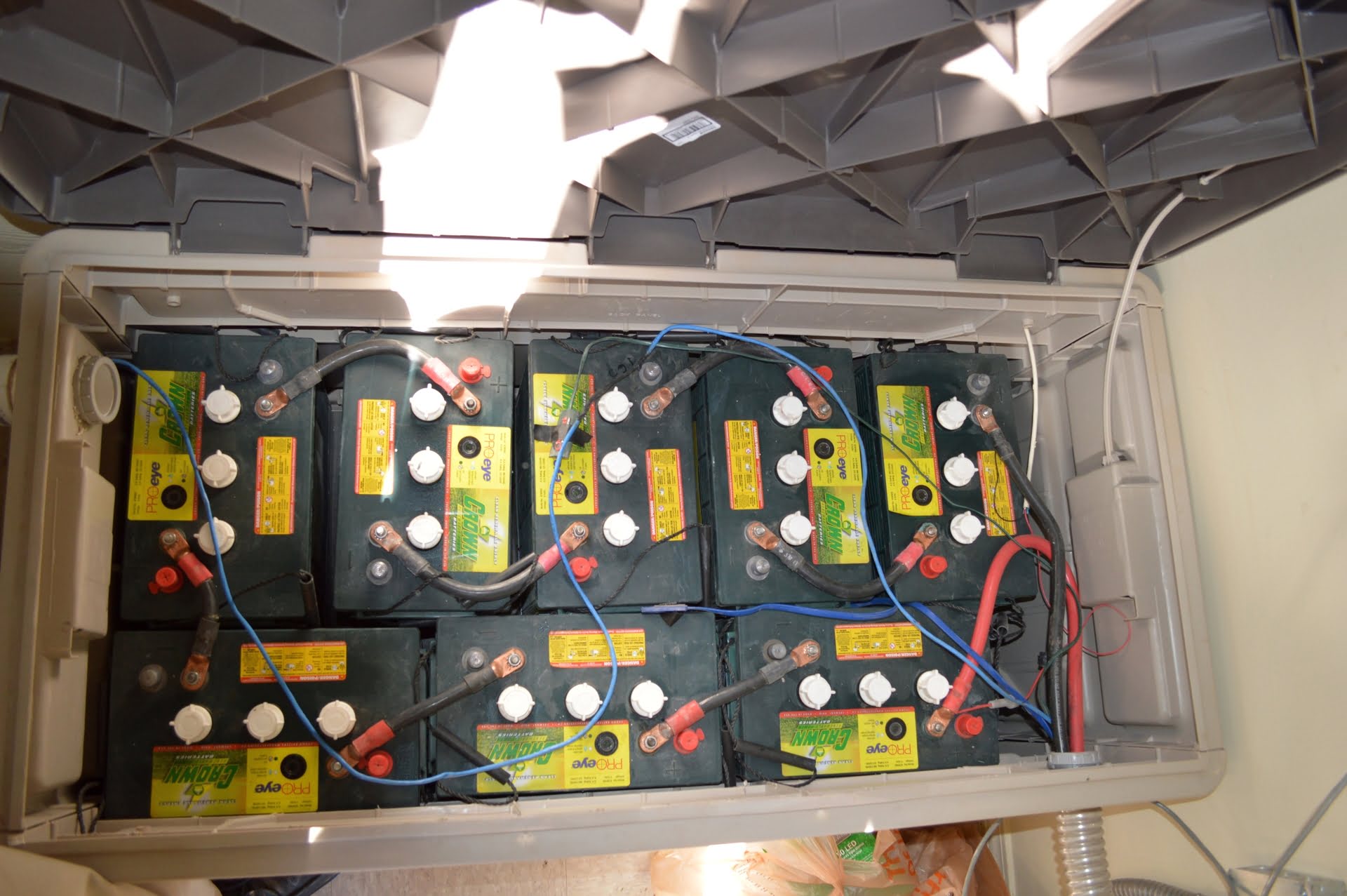
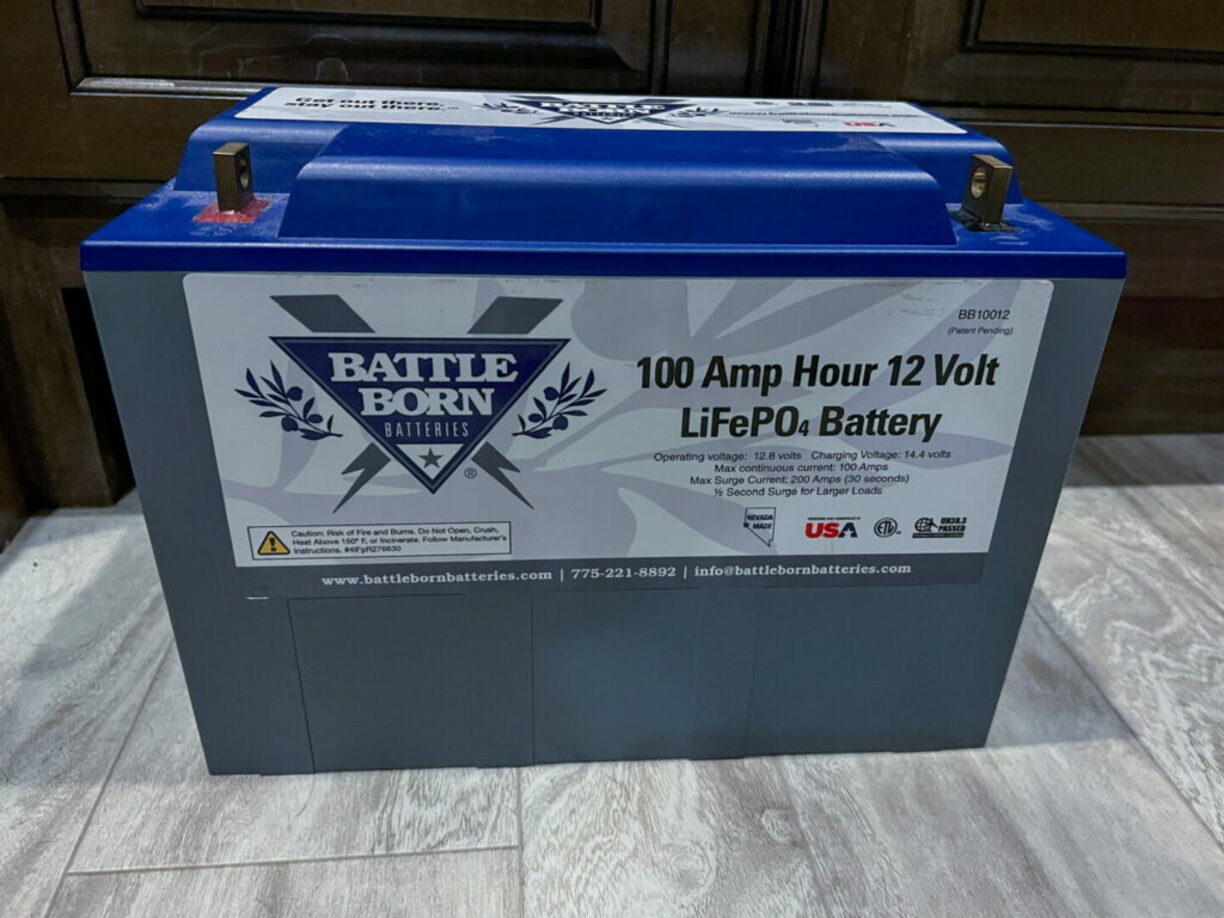




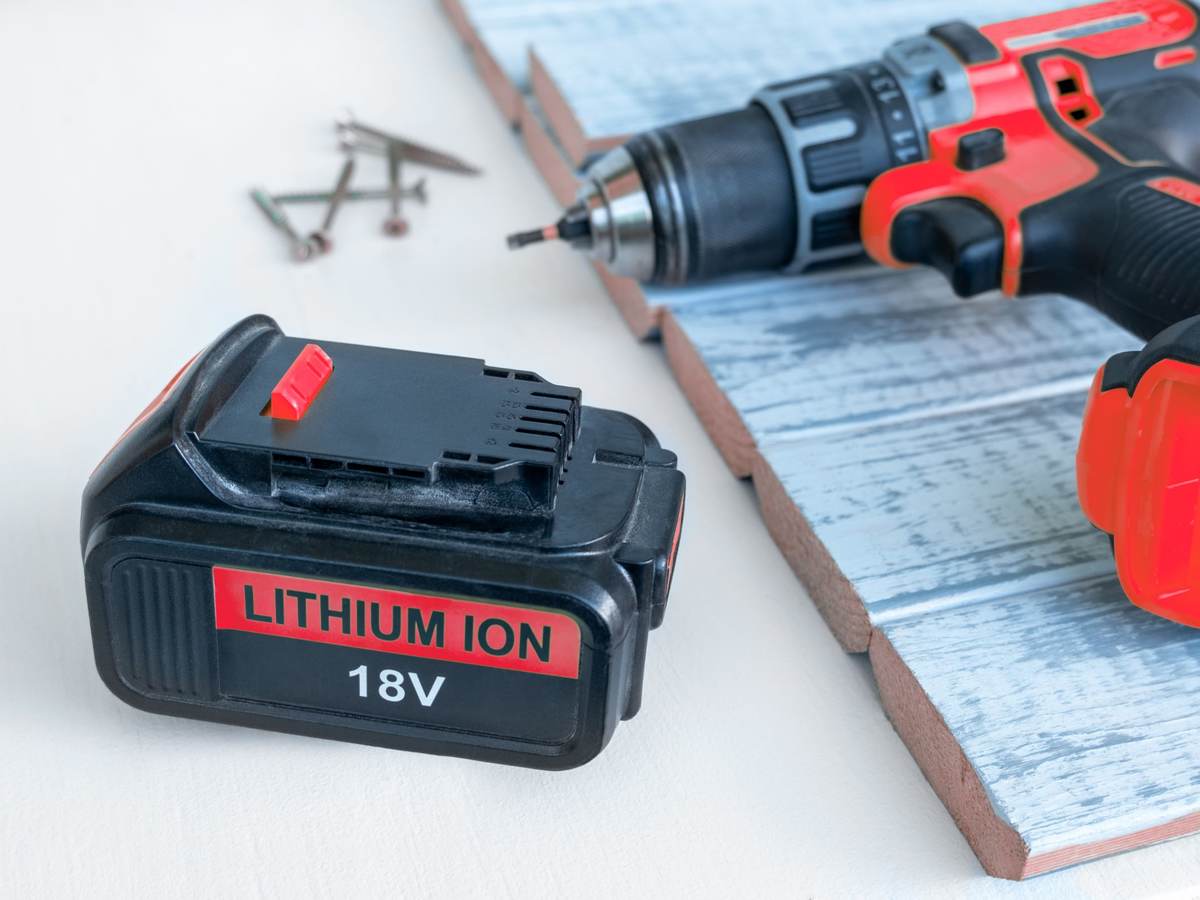
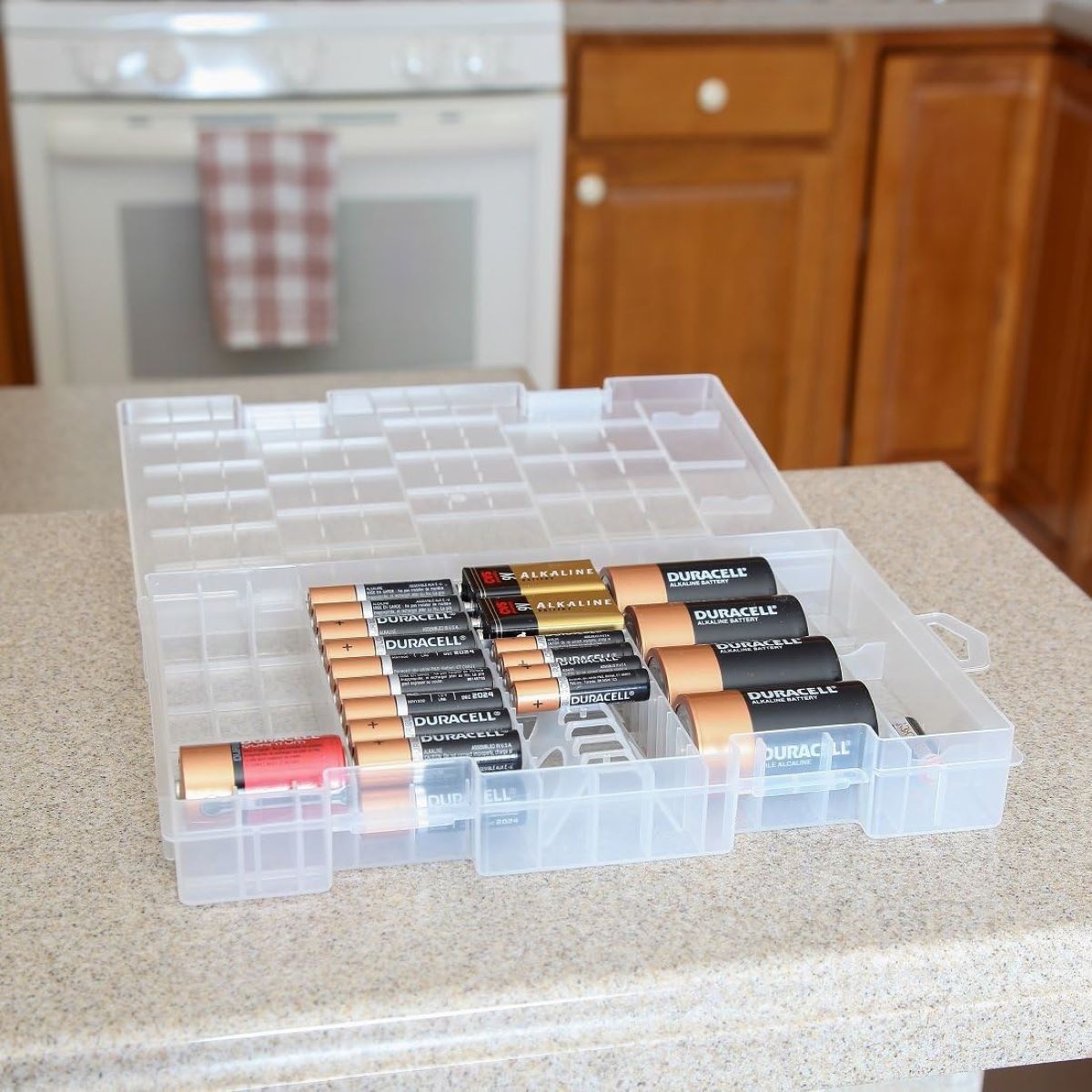




0 thoughts on “How To Store Lithium Batteries For The Winter”